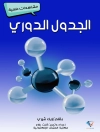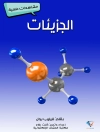This is Volume II in a three-volume set on the Behavior of Radionuclides in the Environment, focusing on Chernobyl. Now, so many years after the Chernobyl accident, new data is emerging and important new findings are being made. The book reviews major research achievements concerning the behavior of Chernobyl-derived radionuclides, including their air transport and resuspension, mobility and bioavailability in the soil-water environment, vertical and lateral migration in soils and sediments, soil-to-plant and soil-to-animal transfer, and water-to-aqueous biota transfer. The long-term dynamics of radionuclides in aquatic ecosystems are also discussed, in particular, the heavily contaminated cooling pond of the Chernobyl Nuclear Power Plant, which is in the process of being decommissioned.
Lessons learned from long-term research on the environmental behavior of radionuclides can help us understand the pathways of environmental contamination, which, in turn, will allow us to improve methods for modeling and predicting the long-term effects of pollution.
This book features a wealth of original data and findings, many of which have never been published before, or were not available internationally. The contributing authors are experts from Ukraine, Russia and Belarus with more than 30 years of experience investigating Chernobyl-derived radionuclides in the environment.
The content presented here can help to predict the evolution of environmental contamination following a nuclear accident, and specifically the Fukushima Dai-ichi nuclear power plant accident.
Table des matières
Part 1 Atmospheric transport of radionuclides and resuspension .- 1. Atmospheric transport of radionuclides initially released as a result of the Chernobyl accident.- 2. Re-entrainment of the Chernobyl-derived radionuclides in air. Experimental data and modelling.- Part 2 Behavior of Chernobyl-derived radionuclides in soil-water.- 3. Mobility and bioavailability of Chernobyl-derived radionuclides in soil-water environment – Review.- 4. Quantitative assessment of lateral migration of Chernobyl-derived 137Cs in contaminated territories of the East European Plain.- Part 3 Behaviour of radionuclides in agricultural and forest ecosystems.- 5. Behavior of Chernobyl-derived radionuclides in agricultural ecosystems.- 6. Behavior of the Chernobyl-derived radionuclides in forest ecosystems and effects of radiation.- Part 4 Behaviour of radionuclides in aquatic ecosystems.- 7. Long-term dynamics of Chernobyl-derived radionuclides in rivers and lakes.- 8. Distribution and dynamics of radionuclidesin the Chernobyl Cooling Pond.- 9. Radioactivity Of Aquatic Biota In Water Bodies Impacted With Chernobyl-Derived Radionuclides.
A propos de l’auteur
Alexei Konoplev
Fukushima University
Institute of Environmental Radioactivity
Fukushima
Japan
[email protected]
Kenji Kato
Shizuoka University
Faculty of Science
Shizuoka Japan
[email protected]
Stepan N. Kalmykov
Lomonosov Moscow State University
Radiochemistry Division Moscow
Russia
[email protected]












